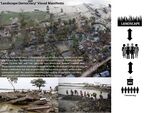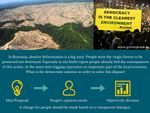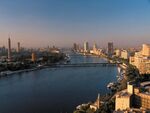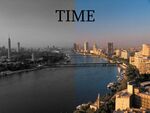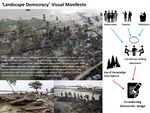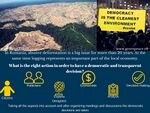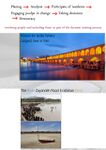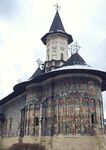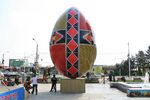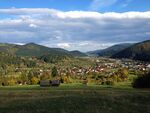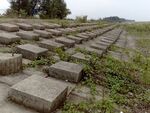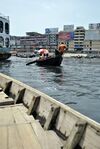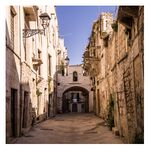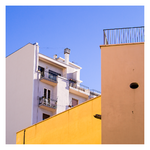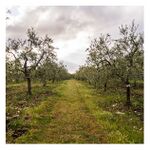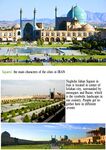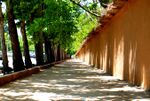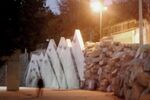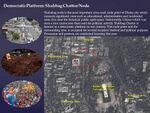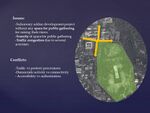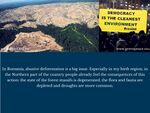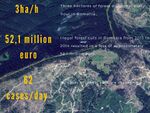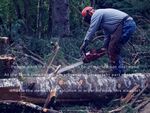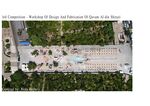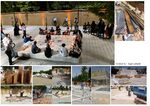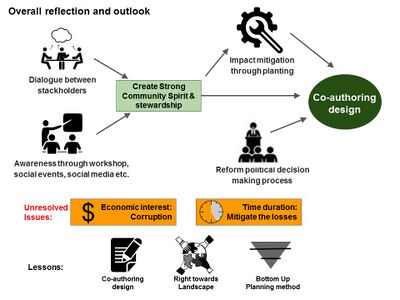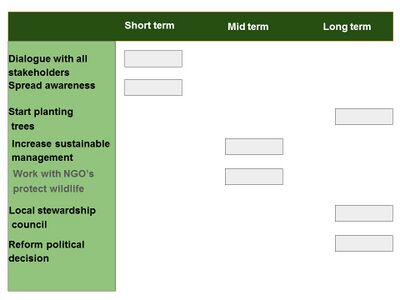LED Online Seminar 2017 - Working Group 7
--> Back to working group overview
Dear working group members. This is your group page and you will be completing the template gradually as we move through the seminar. Good luck and enjoy your collaboration!
Assignment 1 - Reading and Synthesizing Core Terminology
- You can read more details about this assignment here
- Readings are accessible via the resources page
Step 1: Your Landscape Democracy Manifestoes
Step 2: Define your readings
- Please add your readings selection for the terminology exercise before April 12:
A: Landscape and Democracy - Mapping the Terrain
Landscape Concepts:
- Mohammad Al Najdawi
- Kucan, Ana (2007). Constructing Landscape Conceptions. In: ECLAS (ed.). JoLA spring 2007, 30-41. Munich: Callwey.
- Burckhardt, Lucius (1979): Why is landscape beautiful? in: Fezer/Schmitz (Eds.) Rethinking Man-made Environments (2012) (Loredana Cîrdei)
B: Concepts of Participation
- Day, Christopher (2002): Consensus Design, Architectural Press (Loredana Cîrdei)
- Burckhardt, Lucius (1957): Urban Planning and Democracy in (Nastaran Jenabali)
C: Community and Identity
- Welk Von Mossner, Alexa (2014): Cinematic Landscapes(Nastaran jenabali)
D: Designing (Farzana Sharmin)
- Pritzker Prize winning architect Alejandro Aravena on sustainable design and community involvement in Chile
- Hester, Randolph: Democratic Drawing - Techniques for Participatory Design
E: Communicating a Vision
- Alessandro Mintrone
- Storytelling example from the Scottish Islands, Stromness: Urban Design Framework
Steps 3 and 4: Concepts Selection and definition
- Each group member selects three relevant concepts derived from his/her readings and synthesize them/publish them on the wiki by April 30, 2017
- Group members reflect within their groups and define their chosen concepts into a shared definition to be posted on the wiki by May 10, 2017.
- Other group members will be able to comment on the definitions until May 20, 2017
Concepts and definitions
Alessandro Mintrone:
- The Presence of the Past
- History, culture and and socio-economic superstructures are a non-material presence that comes from the past but defines the present.
- The Sense of Space
- The space, non only in his form, but also in its perception, it's the start, the mean and the end of every action on landscape
- The Perspective
- Landscape is not only something that "is", but also something in becoming like a living being. So we have to design time, not just space.
Farzana Sharmin:
- Coauthoring design: work as a joint force of people & designers and split the works.
- Use of common sense and nature to solve the problems.
- Representative representation: These drawing techniques are the specific distinctive way to express public thought process to designers and vise-versa
Loredana Cîrdei:
- Consensus-taking decisions: People involved in a debate will have a general agreement based on objective discussions rather than voting. Source: Christopher with Rosie Parnell Consensus Design-Socially inclusive process.
- Landscape is a creation: The visitors' minds construct the landscape through their background, education and expectations by applying different criterias. Source: Burckhardt, Lucius (1979): Why is landscape beautiful? in: Fezer/Schmitz (Eds.) Rethinking Man-made Environments (2012).
- Charming landscape: Identifying a graceful landscape is directly linked to rediscovering and remembering of past youth, impressions from the parental home, from the read books or from pictures on the walls of the childhood room. Source: Burckhardt, Lucius (1979): Why is landscape beautiful? in: Fezer/Schmitz (Eds.) Rethinking Man-made Environments (2012).
Mohammad Al Najdawi :
- Landscape features act as massage carriers. Kucan, Ana (2007)
- Landscapes can be the carriers of collective identity and historical memory. Kucan, Ana (2007)
- The social conception of space is formed in the systems of communication between society as a producer and the individual as a consumer. Kucan, Ana (2007)
Nastaranossadat Jenabalijahromi:
- The article portrays landscape as a chronological narrative where nature imitates social and environmental dynamics in regards to individuals and their accountability of the bittersweet consequences. a mare example of this presented in the article is the building of a levee witch was evidently for the purpose of economic and social hope, yet resulting in an overflow due to a hurricane eventually forcing the inhabitants to breach the levee, again for the same purpose of economic and social hope. Alexa (2014): Cinematic Landscapes
 Burckhardt, Lucius (1957): Urban Planning and Democracy
Burckhardt, Lucius (1957): Urban Planning and Democracy- The role of public,experts and politicians in decision making for urban development should be exactly specified. Burckhardt, Lucius (1957): Urban Planning and Democrac
Step 5: Reflection
The landscape is playing an important role by delivering messages for the individuals who are interacting with the social conception of space by communication between the individual and the society. It can be a rich resource for collective identity and the historical memories that we can recognize. Landscape is considered a creation because the visitors' minds construct the landscape through their background, education and expectations. A graceful landscape is linked to rediscovering and remembering of past youth, impressions from the parental home or from the read books.
With the existence of democracy people will express their opinion by voting and the majority will be imposed. The majority of people can participate and be more effective by applying the consensus in taking decisions. People are more open to the ideas from the beginning and they give up the rigid position and became more flexible during the process. What is most important in a real democracy is to clearly distinguish between what is that thing the public must decide and those the professional must decide. Therefore the role of public, experts and politicians in decision making for urban development should be exactly specified.
Landscape defines as a chronological narrative where nature imitates social and environmental dynamics in regards to individuals and their accountability of the bittersweet consequences. The important thing which should be considered is that our attachments and understanding of landscapes which are necessarily mediated by culture, attitude and experience.
Power of design is the power of synthesis. In participatory design process, the learning taken from the nature, people’ age long experience & understanding and expert consultancy by designers could give an effective solution regardless scale, speed and scarcity. People & designers work as a joint force. Different techniques are used by community designers to create places with people. Difficult tasks like exchanging complex ideas, science, and technical information with diverse public, synthesizing and drawing designs or imagined environments collaboratively are performed community designers as they don’t share common language. Drawing with the public is immeasurably more complex than the communication techniques learned for traditional architectural or planning practices. Several techniques are used for working collaboratively. They are called “representative representation”. These drawing techniques are the specific distinctive way to express public thought process to designers and vise-versa. After the design process, it needs to communicate the vision of a designer with community. The vision must reflect sense of identity, perception and compromise of the community. The people should feel their roots with the past in present transformation.
Step 6: Revised manifestoes
- please look again at your initial manifestoes and update them with any new aspects/prespectives you have taken up during this seminar
Mohammad's updated manifesto : At the beginning of the course I uploaded this Manifesto trying to show the Nile river in Cairo with the side banks which called: (Cornish) that I have a special experience to live in that city as a citizen for tow years and as an architect always I had to observe how this very important element in the city playing the role as natural element (River) in the same time it is a land mark and it is defining the roads next to the river for traffic and pedestrians and every time I was walking there I was looking to these crowded functions and utilities on the sides of the river and how people are dealing with it (using it)... actually the problems was not so clear for me but just I could feel that the environment getting worse causing pollution for air , water and sometime visual... Now after LED course I believe that the most important problem is that there is a lack of evolving the community in the planing and developing the area and these people living in the city and using this element every day have the right to be involved. I used the term Planning because this problem is not related to this time it is a problem with repetition from old time I mean that by time the city is developing and the river sides are developing but unfortunately this development is responding to economic and investments needs without taking in consideration the environment, demography or future needs so it is obvious that the decision makers do not have a chair for community on there table.
- Updatedmanifesto5.jpg
xy's updated manifesto
Assignment 2 - Your Landscape Symbols
- You can read more details about this assignment here
Landscape Symbols Loredana Cîrdei
Landscape Symbols Farzana sharmin
Landscape Symbols Alessandro Mintrone
Landscape Symbols Mohammad Al Najdawi
Landscape Symbols Nastaran Jenabali
- Symbol yourname photovoice4
add a caption (one paragraph max) description of the symbolism, interpretation, as well as geo-location
- Symbol yourname photovoice5
add a caption (one paragraph max) description of the symbolism, interpretation, as well as geo-location
Assignment 3 - Role Play on Landscape Democracy "movers and shakers"
- You can read more details about this assignment here
- Nastaran Jenabali > Robert Jungk (Zukunftswerkstatt)
- Mohammad Al Najdawi > : Julian Petrin et al., Hamburg (nexthamburg, German only)
- Loredana Cîrdei > : Randy Hester
- Farzana Sharmin > : Samual Mockbee
Assignment 4 - Your Landscape Democracy Challenge
- You can read more details about this assignment here
- Each group member will specify a landscape democracy challenge in his/her environment
Landscape Democracy Challenge: Farzana Sharmin
- Democratic Platform
caption: why did you select this case? Shahabag node is the most important cross road node point of Dhaka city which connects significant zone such as educational, administrative and residential zone. It is near the historical public open space ‘Suhrawardy Udyan’ which was once a race course area then used for political activity. Shahbag Chattor is famous as a democratic platform in our country. This node point and the surrounding area is occupied for several occasion/ festival and political purpose. Procession and protests are conducted focusing this area
caption: what is the issue/conflict. Issues:-Suhrawary uddan development project without any space for public gathering for raising their views;Scarcity of space for public gathering;Traffic congestion due to several activities; Conflicts:Traffic vs protest/ processions;Democratic activity vs connectivity; Accessibility vs authorization
Your references:
Landscape Democracy Challenge: Loredana Cîrdei
- Environmental decisions for the future
Your references:
- ...
- ...
Landscape Democracy Challenge 3
Nastaranossadat Jenabalijahromi
- Unconsideration of human rights in interacting with surrounding
caption: what is the issue/conflict? There was 3rd competition workshop of design and fabrication of Qavam al-din shirazi ,April 21st- May 2nd 2017, in Shiraz afif abad garden, Ghavam al-din passage in shiraz. 120 architectures participated to construct urban element by using brick which was the most used material by Qavam,famous architect in Iran, through the landscape of city.It was held in front of Afif abad garden,through the historic district.They announced people to come and visit their pavilion on second of May, as constructing the pavilions took 3 days to be finished. Unfortunately all the pavilions were destroyed by municipality the day after of finishing the projects.
caption: what is the issue/conflict? Creating is display of the power of creativity and what is inside of you as an Architect. They allocated their time and energy with real and strong passion of designing to fabricate their own exhibition in their urban texture in order to shape a social landscape to attract people joining together with intention of more participation as a person who is living in a city.Municipality disappointed them by unconsidered their capability and penchant for creating .
- ...
- ...
Landscape Democracy Challenge 4 - Mohammad Al Najdawi
- Nile Banks Utility
The challenge in my opinion is not just a problem could be defined but it is to find a good understanding of how this community is dealing with this element and to raise the question: is this element invested in the best way and about the future: If it continue to function the same way is there any negative impacts on environment, community, economy ….etc
- ...
- ...
Assignment 5 - Your Democratic Change Process
- You can read more details about this assignment here
- After documenting and reflecting on your challenges you will continue jointly with one of these challenges and design a democratic change process
Your Democratic Change Process
- Add the title of your project
Look at the various methods and tools available and think how they can be applied creatively. Think about the needs of different stakeholder groups - you may need a methodical mix to address them all. Illustrate graphically how these methods/tools might be applied in a short, medium and long-term perspective.
Reflection
- Our studied site is located in northern part of Romania. For 20 years Romania is facing with abusive deforestation which has a substantial impact on nature but on society as well. Three hectares of forest disappear every hour in Romania. Illegal forest cuts in Romania from 2013 to 2014 resulted in a loss of approximately 52, 1 million euro. Meanwhile 62 cases of illegal cuts are occurring every day. Therefore, we tried to find a democratic solution based on theoretical framework. We created a power map of stakeholders in order to find out who is affecting or affected by the situation. We made a process map according to the short medium and long term period, But There are still some unresolved issues like corruption and time management of loss mitigation. After going through the process we invited people to give their opinion on which action should be taken in order to start the process.
Your references
- ....
- ....
- ....
- ....

